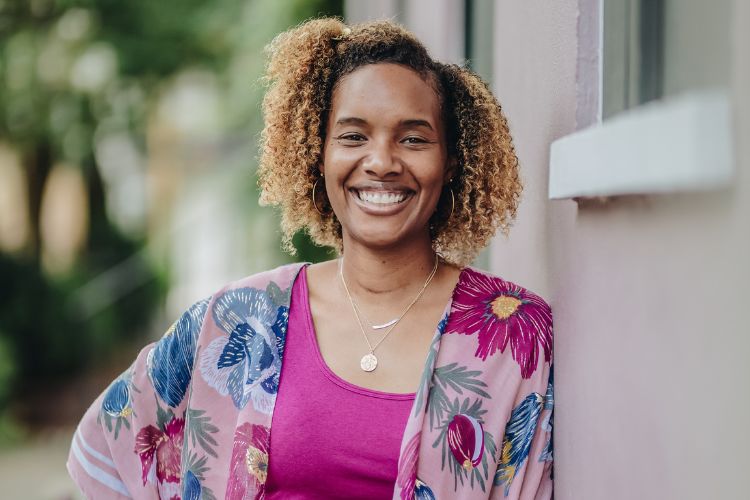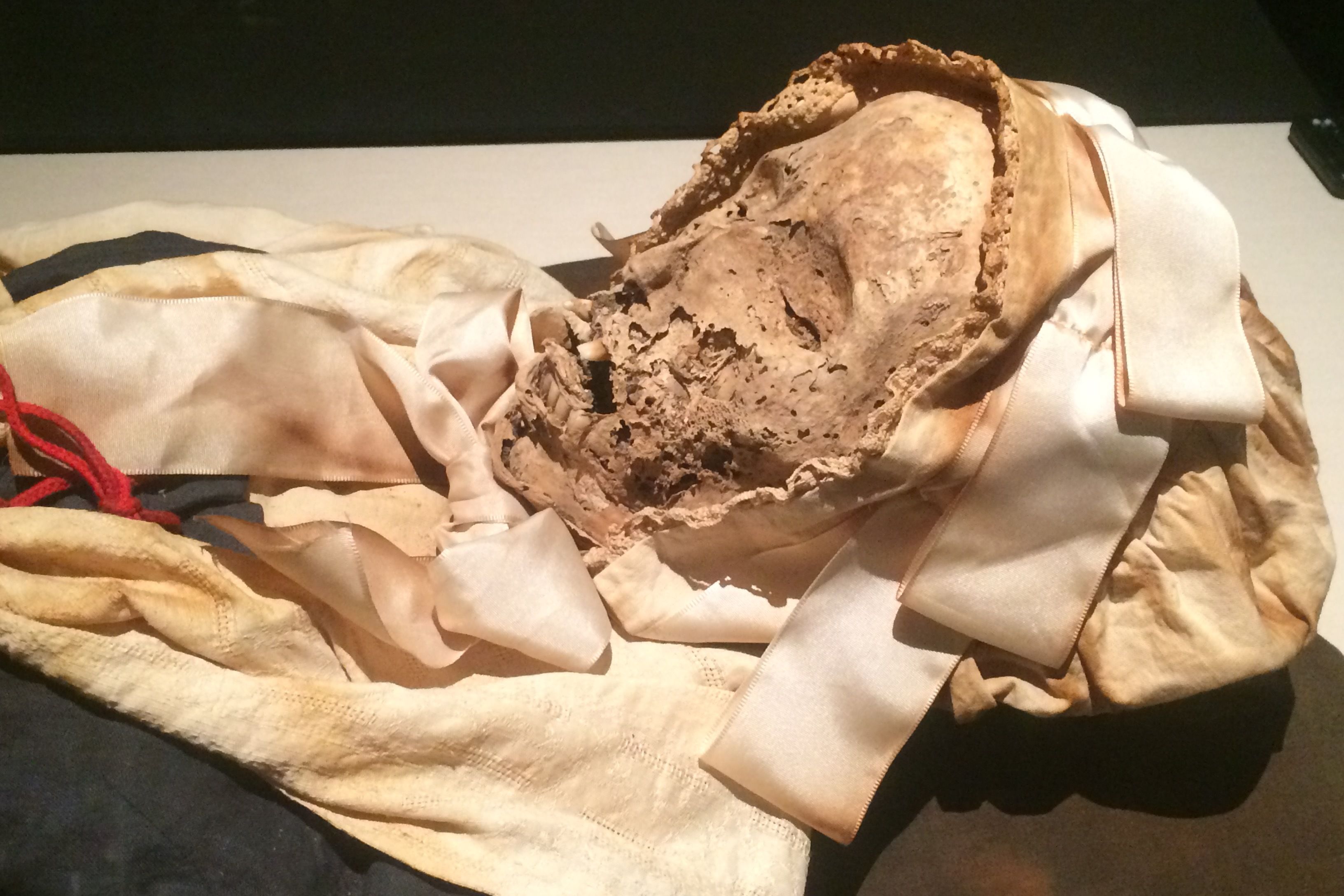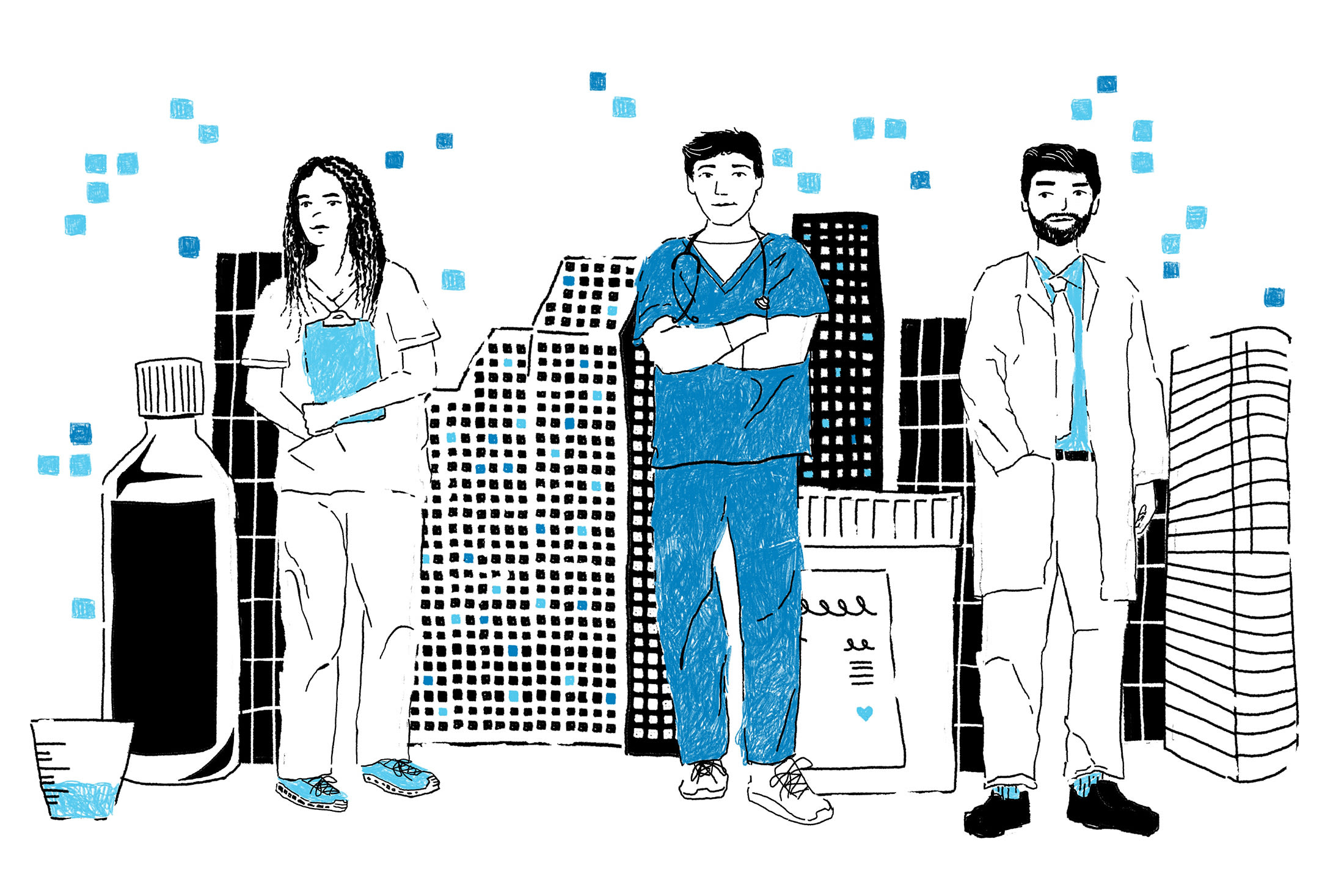The Health Museum’s Live Organ Dissections Cut to the Chase
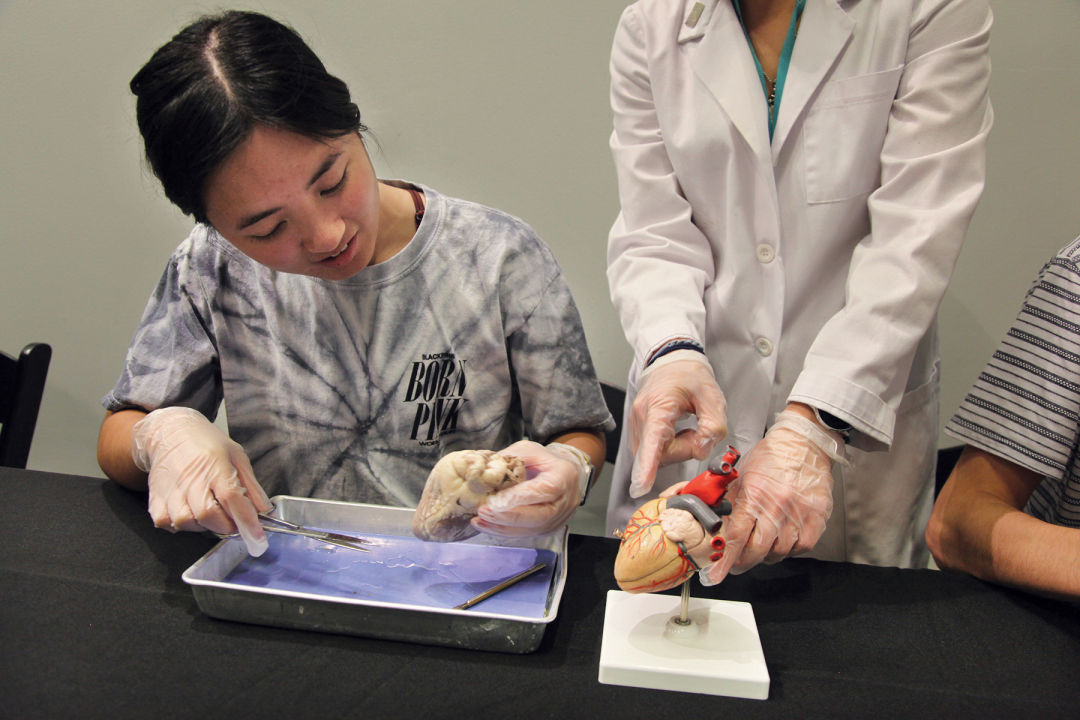
Image: COURTESY THE HEALTH MUSEUM
When fully drained of blood, the mammalian heart sports a desaturated beige color that wouldn’t look out of place in a high-end furniture showroom promoting this season’s hottest neutral tones. Some hearts, like those belonging to sheep, hide the comparatively more aesthetic Valentine’s Day shape inside, only revealed when bisected.
The mere sight of organs can cause queasiness in some people—no judgment here—but being able to see, feel, and even smell (or, at least, take a few whiffs of formaldehyde) all the moving parts involved in keeping a human chugging along can make for a more tangible lesson in what makes us…well…us. Every Thursday, the John P. McGovern Museum of Health and Medical Science hosts a live organ dissection demonstration at 3pm and 5pm, providing detailed, thoughtful insight regarding essential bodily processes for only $6. Museum admission is otherwise free that day.
“I don’t think a lot of people think of the nursing profession or the nurse as an educator. In the clinical setting, so much of what I do is education. There are so many questions from very, very basic to extremely advanced,” says Tarren Vielma, an ICU nurse and science educator at the Health Museum who cofounded the live dissection events in 2018. “That translates really well here [at the museum], because so many people have questions like, ‘Oh, I didn’t know that’s how that worked,’ or ‘I had no concept of that,’ or ‘I didn’t know it was this big,’ or ‘Where is this?’”
Vielma originally started off carting the organs around the museum, opening and showing them to people in different areas. One day, she spoke with her coworker at the time, Mary Freisner, about how they could use the building’s theater instead. It has a projector and 122 seats, and museum admission is waived on Thursdays anyway. The pair thought that set-up would reach a wider audience than the carts.
The pair thought right.
On its best days, usually in the summer and around holidays, Vielma dissects hearts, eyes, kidneys, tracheas, brains, and other organs for a full audience. She states that it’s usually a good mix of kids and adults, and that the demonstrations are especially popular with families, school groups, and tourists. At least a few dozen people attend every Thursday.
Along with the dissection itself, the presentations also include a family-friendly lecture on the functions of the organ featured that day and how to keep it healthy, as well as a Q&A and trivia questions (answer correctly and you may receive a free Health Museum sticker). Vielma is a charming host, filling her talks with lighthearted jokes, fun facts, and helpful analogies. She takes care to acknowledge the commonalities and differences between the organs on display and the equivalents found in humans so audience members gain the clearest possible picture of their own body's inner machinations.
The organs the Health Museum uses for its dissections come from pigs, cows, or sheep purchased from scientific supply companies, who source from slaughterhouses. This helps reduce the amount of waste produced when harvesting animals for food while simultaneously providing important educational materials. Human remains are not legally obtainable for these demonstrations—when it comes to education, they’re usually only available to medical schools.
Vielma’s favorite organ to dissect and share with the audience is the heart, because “most people can wrap their brain around it a little better, because it’s simpler in terms of dissection [and] a lot of people can hold it and feel it.” The heart was also the first organ she and Freisner started sharing with Health Museum attendees, so she sees it as “nostalgic.” Audience members, especially kids, are fond of days when she brings in cow eyeballs.
“The eyes are fun. It’s all squelchy, and it makes great sounds. And it’s got a lot of parts,” Vielma says. Attendees are invited to come up to the stage after the program to snap on a pair of latex gloves and touch the finished dissection. And they do, with children rushing to the front to line up and take turns poking and giggling at the organ, occasionally asking the questions they came up with after the Q&A.
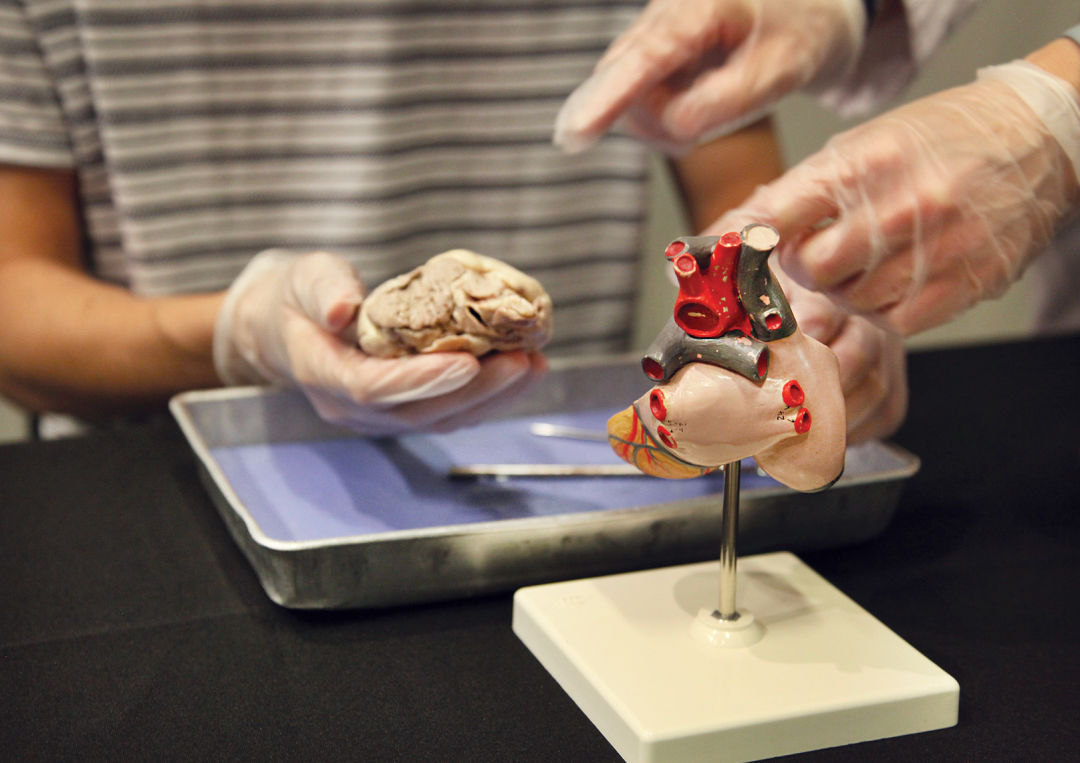
Image: COURTESY THE HEALTH MUSEUM
For audience members who want to further plumb the depths of anatomy, Doc Dissection events held one to three Saturdays per month provide them an opportunity to examine and dissect organs themselves. It costs a little more to attend than the live dissections, with pricing dependent on which organs are being featured that day, anywhere between $30 to $50 for an individual ticket. Each participant receives an organ—or they can share with a friend or two—and the Health Museum provides all the supplies needed along with a doctor scheduled to run the programming.
As with the live dissections on Thursdays, the Doc Dissections foster a greater understanding of how the body works and the actions one can take to stay healthy. It initially started as a way for schools to work closely with the Health Museum on more interactive biology and anatomy lessons, but became accessible to everyone in 2023.
“We realized we were offering all of these awesome classes for school groups. But I’m a firm believer that learning doesn’t stop in school, so it started as a way that we can expand learning beyond your traditional classroom,” says Ella Hohmann, the Health Museum's science communications specialist. “So we wanted to open it up to the public, and then we were thinking, okay, how can we take it up a notch? We have a great network of doctors that we work with often for different things [like] exhibits, programs.”
Neuroscientists and neurosurgeons oversee the brain dissection and suturing events, for example. Eye experts come in to teach about eyes, kidney experts for kidneys, and so forth. As the roster of educators grows, so too does the range of dissection options.
“At the beginning, we only did hearts, brains, and eyes. Now we’ve expanded it to include kidneys,” Hohmann says. “We do frogs, fetal pigs, rats, tracheas and lungs, livers, and also practical classes, like suturing labs and splinting labs.”
The ability to directly witness, even interact with, the specimens on hand reflects the Health Museum’s commitment to promoting public health. Educated patients are better equipped to take the precautions needed to keep healthy and communicate symptoms and concerns more clearly with their health care providers. As Vielma points out, this can also help parents, guardians, and caretakers better advocate for family members requiring medical attention.
“I’ve had a number of young children that have come in and they say, ‘I have this heart condition’ or ‘I have this kind of valve, where is that in the heart?’ You can show them in a sheep heart, and they can touch it…and I’m like, ‘This is the same thing. You have this same valve, or you have two instead of three of something,’” she says. “To see their face when they can put, ‘This is what I’ve been told’ to, ‘This is what I can touch…’ It’s very humbling. It’s very rewarding.”
Adults also come with plenty of questions, with inquiries about preventing and managing high blood pressure among the most common. Both the live dissection and the Doc Dissection offerings make crucial health information accessible to more Houstonians (or temporary Houstonians, in the case of tourists). It isn’t hyperbole to say that these events can save lives.
“I always like to say, usually you get a doctor for 15 minutes. In this program, you get a doctor for a whole hour,’” Hohmann says. “If you have a really technical question about an embolism or something, ask the doc that and they’ll answer it… We get many health care professionals who come in [as audience members] as well.”
Vielma, Hohmann, and their peers help ensure all their visitors receive strong, science-backed education regardless of their age and familiarity with the material. All it takes is a lot of commitment and even more heart—literally and metaphorically.
As Hohmann points out, “I like to think of it as the Mary Poppins thing: a spoonful of sugar makes the medicine go down. The medicine being this knowledge that you’re gaining. But because of how fun and interactive it is, it feels like it’s just a spoonful of sugar.”

